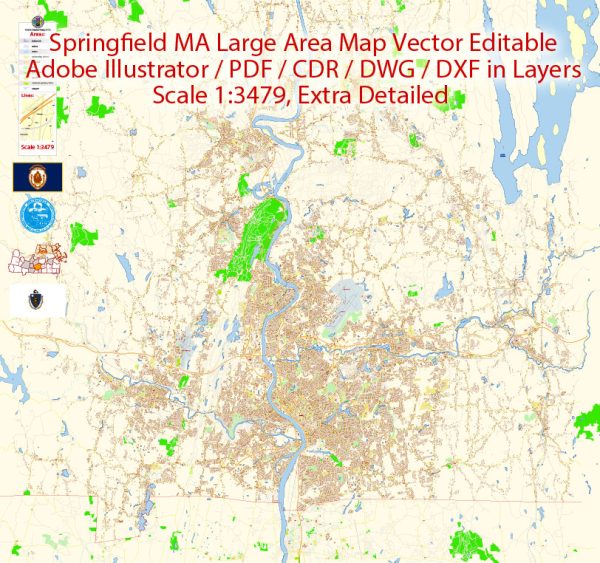Springfield, Massachusetts, has a rich history of urban development that spans several centuries. Here is a brief overview of key periods and aspects of Springfield’s urban development:
- Colonial Era (1600s-1700s):
- Springfield was founded in 1636 by English Puritan William Pynchon and a group of settlers. It was one of the first inland settlements in the Massachusetts Bay Colony.
- The settlement grew along the banks of the Connecticut River, taking advantage of its strategic location for trade and agriculture.
- Industrialization (late 1700s-1800s):
- Springfield played a significant role in the Industrial Revolution, becoming a hub for manufacturing and innovation.
- The Armory, established in 1794, became a major producer of firearms for the United States military, leading to increased industrialization and population growth.
- Transportation and Infrastructure (19th century):
- The expansion of railroads in the 19th century further fueled Springfield’s growth, connecting the city to other major urban centers.
- The Connecticut River and the railroads facilitated the movement of goods and people, solidifying Springfield’s position as a regional economic center.
- Urbanization and Growth (late 19th to early 20th century):
- With industrialization and improved transportation, Springfield’s population boomed. The city saw the development of residential neighborhoods, commercial districts, and civic institutions.
- The Forest Park neighborhood, developed in the late 19th century, became an affluent residential area with well-designed homes.
- The Great Depression and World War II (1930s-1940s):
- Springfield, like many other cities, faced challenges during the Great Depression. The Armory became a crucial hub for military production during World War II, contributing to the war effort.
- Post-War Era and Suburbanization (1950s-1960s):
- The post-war period saw suburbanization trends, and Springfield experienced a shift in population as people moved to the suburbs.
- Interstate highways, such as I-91 and I-291, were constructed, influencing the city’s development patterns.
- Economic Challenges and Revitalization Efforts (late 20th century to present):
- Like many older industrial cities, Springfield faced economic challenges in the latter half of the 20th century, including deindustrialization and urban decay.
- Efforts have been made to revitalize downtown areas, attract business investment, and improve infrastructure. The creation of the Basketball Hall of Fame in the 1960s and the development of the MassMutual Center are examples of initiatives aimed at revitalization.
- Cultural and Educational Institutions:
- Springfield is home to several cultural and educational institutions, including museums, universities, and cultural centers, contributing to the city’s identity and appeal.
Springfield’s history of urban development reflects broader trends in American history, from colonial settlement to industrialization, suburbanization, and efforts at urban revitalization. The city continues to evolve, facing challenges while preserving and celebrating its rich historical legacy.


 Author: Kirill Shrayber, Ph.D.
Author: Kirill Shrayber, Ph.D.